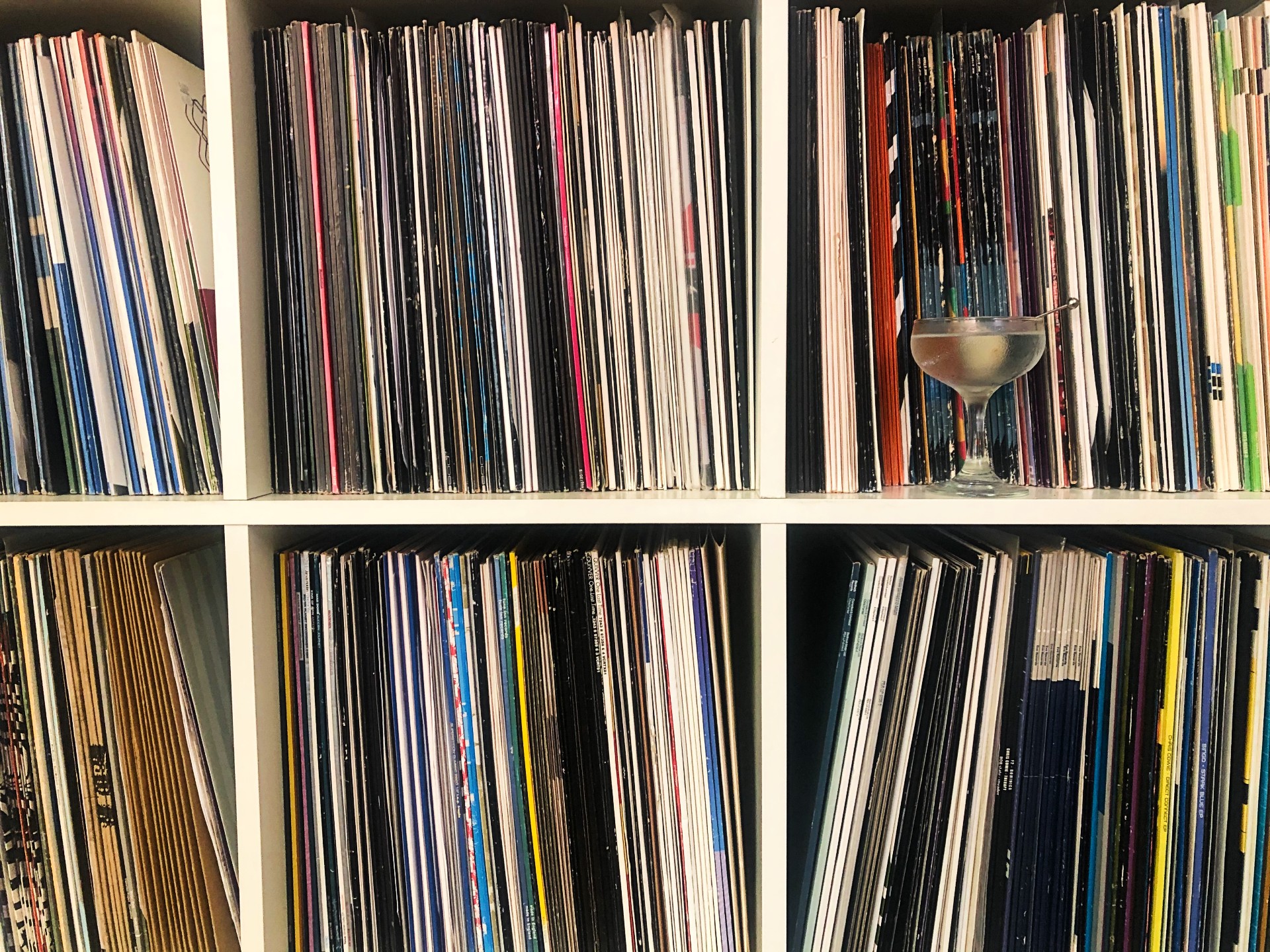
Gibson and vinyl | Photo: Daniel Djang
Record Store Day is back for its 15th anniversary on April 23! To celebrate, I’m putting the band back together for another edition of Booze and Vinyl, an ongoing series inspired by the excellent cocktail book of the same name by André and Tenaya Darlington. Volume 2 was just published by Running Press, featuring 70 great albums from the 1950s to today paired with mood-setting cocktails.
Following the Darlingtons’ template, I invite music nerds from the bar industry to select an album and share recipes for cocktails to enjoy with it. The guest writers also spotlight a nonprofit that they support. Starting with an offer you can’t refuse from yours truly, enjoy a wonderfully eclectic mix of music and drinks. Shop local and support independent record stores!
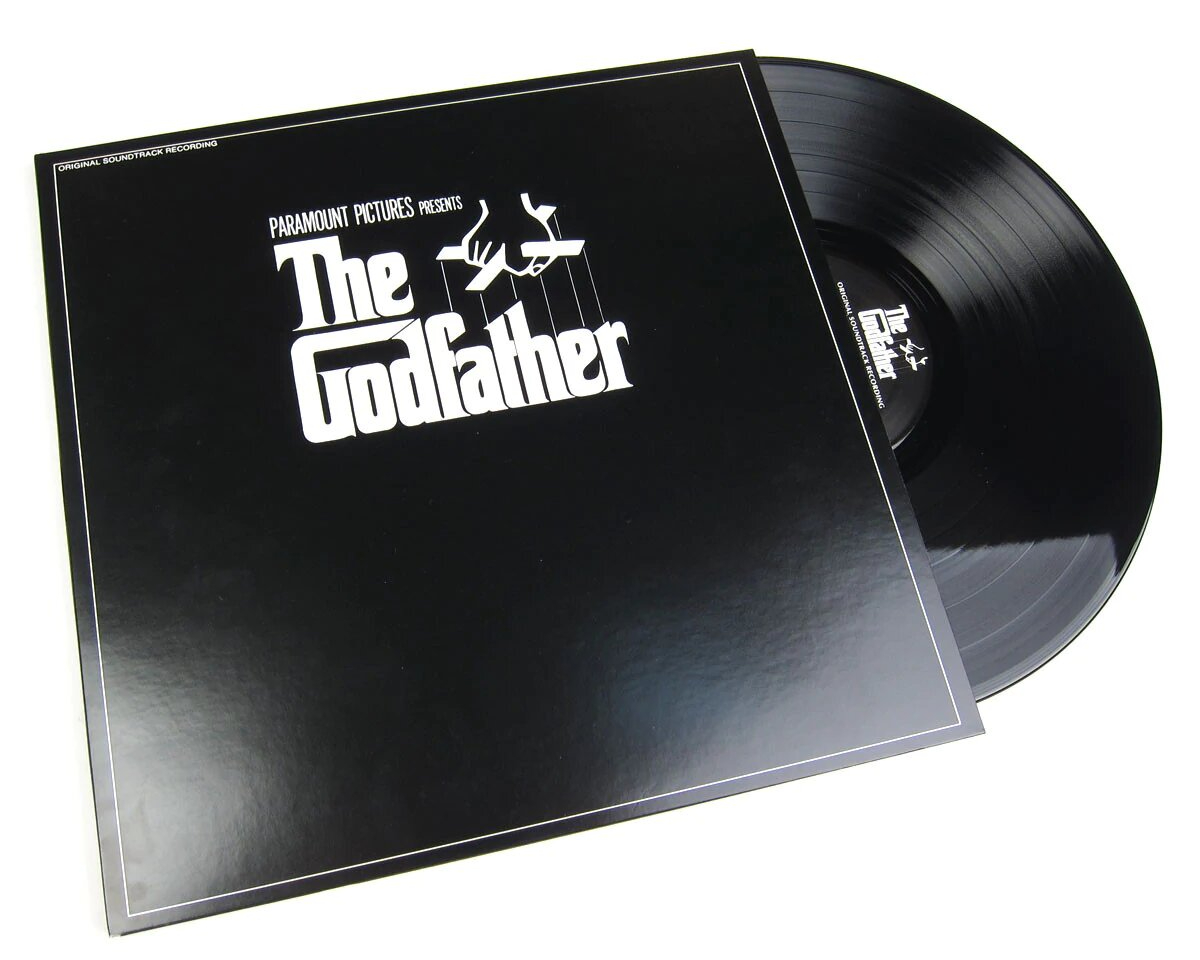
Nino Rota – “The Godfather” (Geffen Records) | Photo: Turntable Lab
Nino Rota – The Godfather [Paramount Records, 1972 | Geffen Records, 2015]
One of the greatest films of all time, The Godfather celebrated its 50th anniversary in March. Based on Mario Puzo’s bestselling novel and directed by Francis Ford Coppola, The Godfather was critically acclaimed on its initial release in 1972 and was also the highest-grossing film of that year. The Godfather went on to win three Oscars: Best Picture, Best Adapted Screenplay (for Coppola and Puzo) and Best Actor for Marlon Brando, who declined the award and sent civil rights activist Sacheen Littlefeather in his stead to protest the depiction of Native Americans by Hollywood. (*cough* Said the guy who wore yellowface in The Teahouse of the August Moon. *cough*)
Praised as a bona fide cinematic masterpiece around the world, The Godfather is part of our collective cultural DNA – even if you haven’t seen the movie, you instantly recognize Brando’s iconic portrayal of Don Corleone and can quote classic lines like “I’m gonna make him an offer he can’t refuse.” (For this post, I rented Paramount’s new 4K UHD release on Prime Video – it looks bee-yoo-tiful!)
The music score was composed by the prolific Italian maestro, Nino Rota, who had garnered acclaim for his work with director Federico Fellini on La Strada, La Dolce Vita, 8½ et al. The soundtrack album was originally released in 1972 and reissued in 2015 on 180-gram vinyl, cut from the original analog tapes.
Rota received an Oscar nomination for Best Original Dramatic Score, but it was withdrawn after the Academy ruled that he had reused the melody from a 1958 comedy, Fortunella for the “Love Theme From The Godfather.” (Rota would later win an Oscar for The Godfather Part II.)
SPOILERS AHEAD.
The Godfather opens with “The Godfather Waltz” – a melancholy trumpet plays over the main title, then Bonasera (played by Salvatore Corsitto) fades into view and gives his “I believe in America” speech to ask a favor from Vito Corleone. Variations on the waltz are heard throughout the film – after the torch has been passed to his youngest son Michael (Al Pacino), the waltz quietly plays as Vito counsels him about his meeting with Don Barzini. (“I never wanted this for you.”) “The Godfather Waltz” is heard one last time in the haunting final scene, when Kay Adams (Diane Keaton) sees her husband Michael addressed as “Don Corleone” and the door is literally and symbolically closed on her. Side A also features the film noir-style “The Pickup” and “Connie’s Wedding,” composed by Coppola’s father, Carmine.
The first track of Side B is the “Love Theme From The Godfather” – it’s introduced when the film cuts from Vito recovering at home from an assassination attempt to Michael taking a walk in Sicily. This theme is undoubtedly the song that’s most closely associated with The Godfather, but personally the waltz is what I hear whenever I think of the movie. The operatic, organ-driven “The Baptism” anchors the stunning climactic sequence when Michael “settles all family business.”
A-Side: Flame of Love
The album’s only vocal track is “I Have But One Heart,” a pop song performed in the film by Johnny Fontane (Al Martino) at the wedding of Vito’s daughter, Connie (Talia Shire). The Fontane character is widely believed to be based on Frank Sinatra – in his commentary for The Godfather Blu-ray, Coppola said, “Obviously Johnny Fontane was inspired by a kind of Frank Sinatra character.”
Fontane is in a career slump and asks his godfather for help to land a role in an upcoming movie adaptation of a bestselling novel. (“It puts me right back up on top again.”) Thanks to Don Corleone, Fontane gets the part, and in Puzo’s novel he goes on to win an Oscar. During the postwar setting of The Godfather, Sinatra was likewise on a downward spiral and he lost his recording and film contracts. He desperately wanted the role of Pvt. Angelo Maggio in From Here to Eternity, which was based on James Jones’ novel of the same name. Sinatra got the part, won the Academy Award for Best Supporting Actor, and revitalized his career. Hmm…
In The Godfather Papers and Other Confessions (excerpted in New York magazine), Puzo recounted his infamous encounter with Sinatra at Chasen’s. Located at Beverly and Doheny, the celebrity hotspot was open from 1936 to 1995 and is now a Bristol Farms. Puzo was staying at the nearby Beverly Hills Hotel and working on The Godfather screenplay when he was invited to a small birthday party at Chasen’s. The party was hosted by a “famous millionaire” – after dinner, he insisted on introducing Puzo to Sinatra, who was dining at another table. Sinatra never looked up: ”I don’t think so. I don’t want to meet him.” Puzo wrote that Sinatra kept staring at his plate as he began berating him, calling him a “pimp” and yelling “choke, go ahead and choke” as he left Chasen’s.
Sinatra’s Rat Pack pal, Dean Martin was a regular at Chasen’s. In 1970 he asked legendary bartender Pepe Ruiz to create a drink for him. The result was the Flame of Love, a Martini variation with vodka and sherry that’s highlighted by flamed orange peels. Dale DeGroff notes in The New Craft of the Cocktail that when Sinatra saw the Flame of Love, he was so excited he told Pepe to “water the infield,” meaning Ol’ Blue Eyes was buying a round of them for everyone.
Flame of Love
by Pepe Ruiz, Chasen’s (1970) | recipe from “The New Craft of the Cocktail” by Dale DeGroff (2020)
- ¼ oz La Ina fino sherry (if unavailable, DeGroff says Tio Pepe is a good substitute)
- 2 flamed orange zest coins
- 2½ oz Finlandia Vodka
- Coat the inside of a chilled cocktail glass with the sherry and toss the remainder into a cocktail shaker. Flame one of the orange zest coins into the cocktail glass and discard. Add the vodka with ice to the cocktail shaker. Stir and strain into the seasoned cocktail glass. Flame the second coin and drop it into the drink.
B-Side: Bittersweet Sicilian
“It’s not personal, Sonny. It’s strictly business.” After Michael exacts revenge for the attempt on his father’s life, he hides out in Sicily under the protection of Vito’s old friend, Don Tommasino. While in exile, Michael takes a walk to Corleone, the small village where his father was born and raised. (Fun fact, per Wikipedia: Al Pacino’s real-life maternal grandparents were Corleonese!)
During that walk, Michael is smitten with a beautiful local girl, Apollonia Vitelli (Simonetta Stefanelli). One of his bodyguards says, “I think you got hit by the thunderbolt.” (aka colpo di fulmine, the Italian version of “love at first sight.”) After they first meet, we hear “Apollonia,” a mandolin variation of the “Love Theme.” Michael courts Apollonia in the Old World style, with her family as chaperones, and they’re soon married. Tragically, she’s killed by a car bomb intended for Michael.
In his 2016 book, Amaro: The Spirited World of Bittersweet, Herbal Liqueurs, Brad Thomas Parsons gives a brief history of Averna, which was founded in 1868 and dates back to the Benedictine monks of the San Spirito Abbey in Caltanissetta, Sicily. As a token of their gratitude, the monks gave the secret formula of their herbal elixir to Sicilian businessman Salvatore Averna, a benefactor of the abbey.
Parsons features several spiked milkshakes in Amaro, including the Bittersweet Sicilian with Averna. It’s easy to imagine Michael and Apollonia going out for an old-fashioned milkshake during their courtship – booze-free and under the watchful eye of the Vitelli family, of course. The recipe makes a “decadent milkshake for one,” or you can pour it into two smaller glasses to share.
Bittersweet Sicilian
recipe from “Amaro” by Robert Simonson (2016)
- 2 large scoops coffee ice cream
- 1 large scoop caramel ice cream
- 1 tablespoon malted milk powder
- Pinch of salt
- 2 oz Averna
- Whipped cream
- Garnish: caramel drizzle and cocktail cherry
- Combine all the ingredients except the whipped cream and garnish in a blender and blend until smooth and creamy. Pour into a chilled glass. Top with the whipped cream and garnish with the caramel drizzle and cocktail cherry.
Bonus Track: Little Italy
It’s tempting to feature the Godfather cocktail (Scotch and amaretto on the rocks), but one of my favorite modern classics, the Little Italy, is far more relevant to The Godfather. The Little Italy was created by Audrey Saunders at her famed SoHo bar, Pegu Club, which sadly closed in 2020 due to the pandemic. Saunders’ Manhattan variation features Cynar – the vegetal, low ABV artichoke liqueur.
The Lower Manhattan community of Little Italy is significant to The Godfather saga – the Corleone’s front company, Genco Pura Olive Oil, was founded there by Vito in the 1920s. The backstory is told magnificently in The Godfather Part II, the first sequel to win Best Picture. In The Godfather, Don Corleone declines an offer from Virgil Sollozzo (Al Lettieri) to get into the heroin trade in a meeting at the Genco Pura offices. Vito is later shot at a nearby fruit stand – “The Godfather Waltz” plays as a despondent Fredo (John Cazale) weeps over his father’s bullet-riddled body.
Little Italy
by Audrey Saunders, Pegu Club (2005)
- ½ oz Cynar
- ¾ oz sweet vermouth
- 2 oz rye whiskey
- Stir over ice and strain into a chilled coupe. Garnish with a cocktail cherry.
Nonprofit: Art Beyond the Glass is back for its 10th event! Join us at ABTG X on Sunday, June 26 as we raise funds for Street Symphony at the legendary Catch One nightclub.
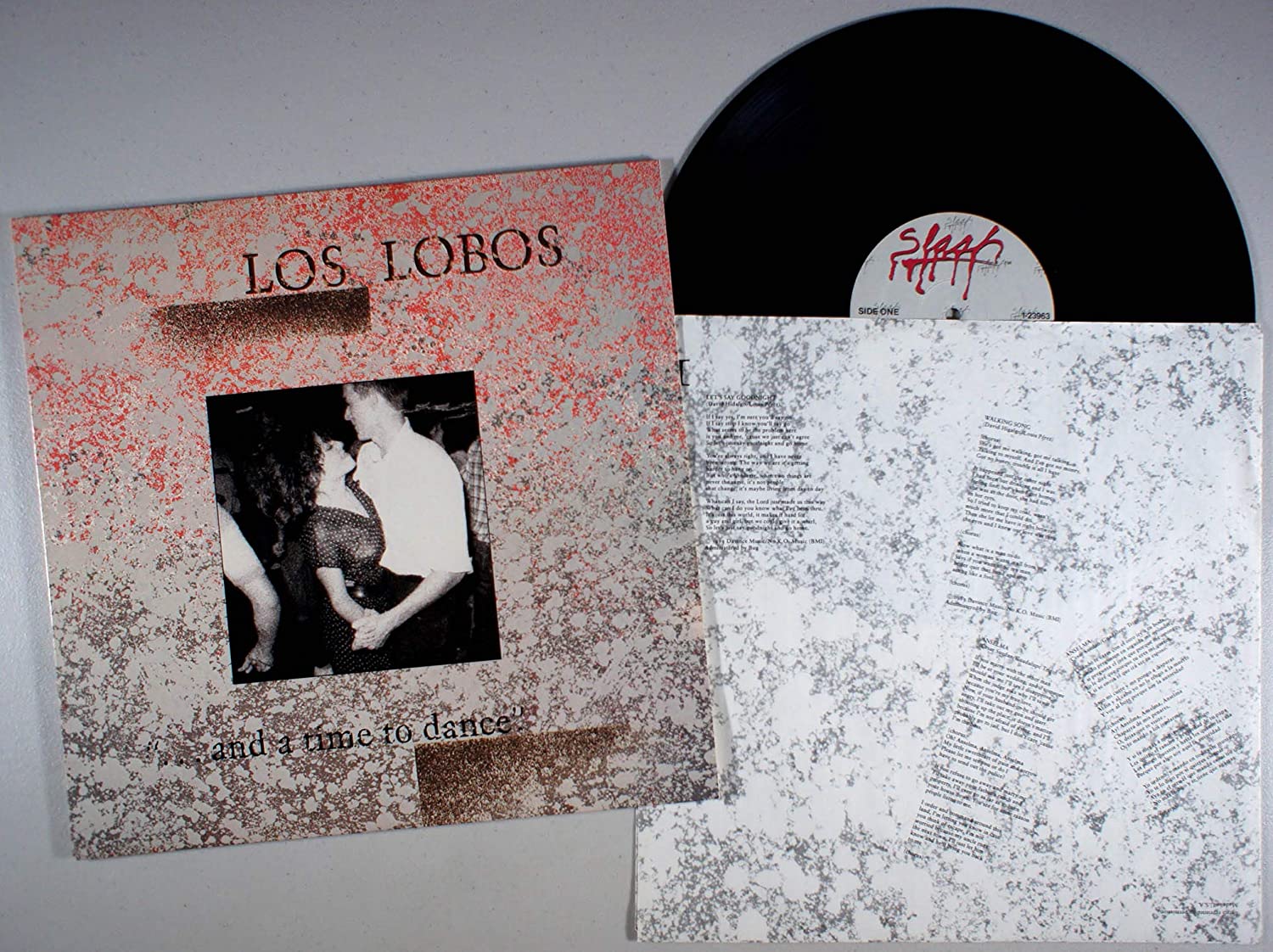
Los Lobos – “…and a time to dance” | Photo: Amazon
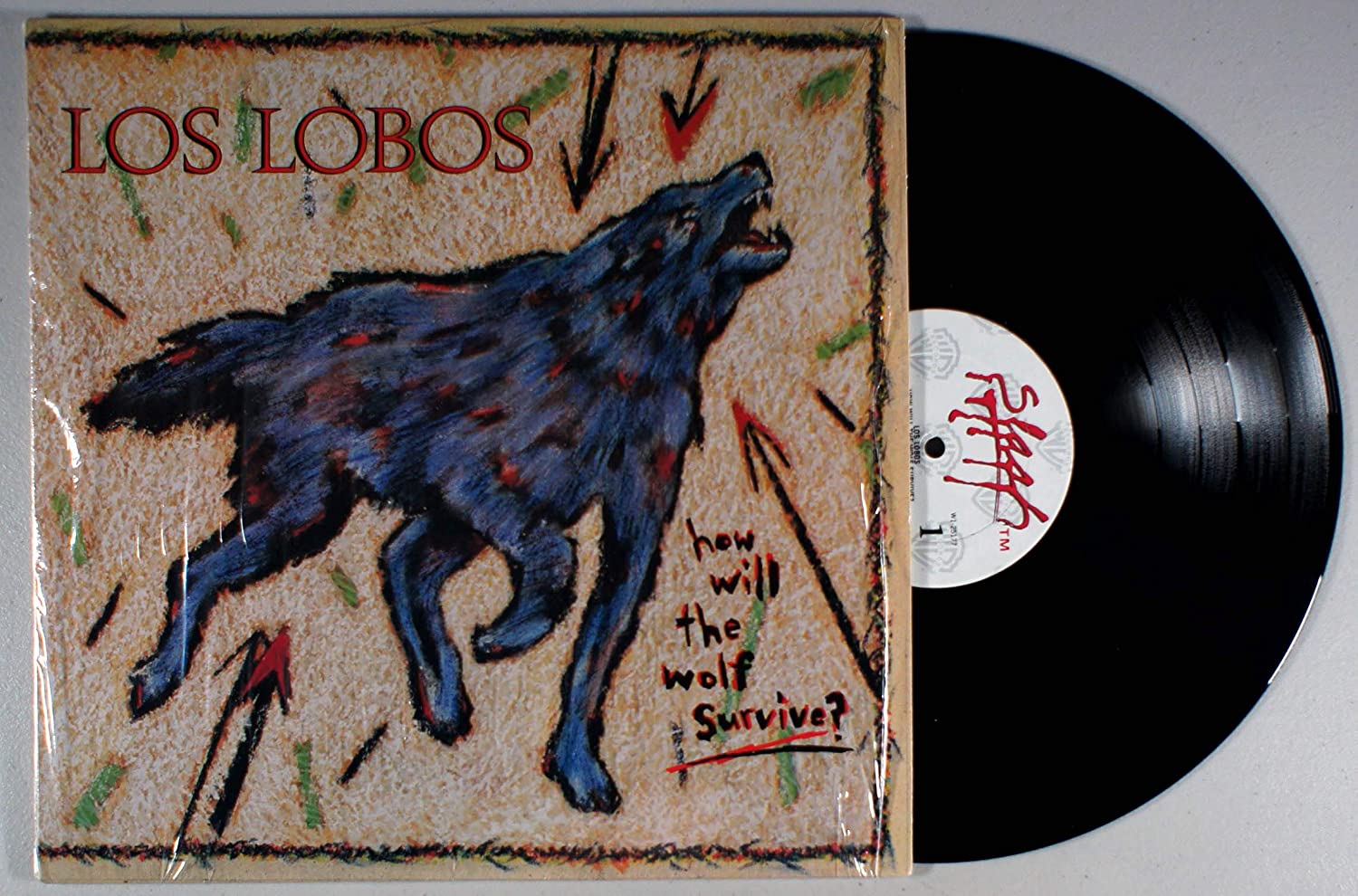
Los Lobos – “How Will the Wolf Survive?” | Photo: Amazon
CHUCK TAGGART
Chuck Taggart moved to Los Angeles from New Orleans in 1982 to go to film school, and has been here ever since. Amid working at HBO for 30+ years he also found a side career in public radio, having DJed at KCRW and KCSN from 1988-2008, and fell into cocktail nerdistry in the late ’90s. His now-undead weblog Looka! evolved into one of the early cocktail blogs way back when. He still drinks and listens to music, especially during daily listening to WWOZ. His radio show, Safe at Home streams live every Saturday at 1pm Pacific and is archived at Mixcloud.
Los Lobos – …and a time to dance [Slash Records, 1983] | How Will the Wolf Survive? [Slash/Warner Bros., 1984]
“Yes, I know I was supposed to pick one vinyl LP, but even though they came out in consecutive years I consider these records to be as one, plus I will happily embrace being a great big ol’ cheatin’ bastard and will therefore include them both. Plus the former is only an EP, so let’s pretend that both discs are inside a glorious gatefold album cover together. (Idea for the record company: I would buy this, especially given how worn my old vinyl is.)
Musically, these records represent to me the start of my transformation from a New Orleanian who lives in Los Angeles to an Angeleno from New Orleans. I’d been getting into the roots music of my home state of Louisiana for several years at that point (learning a lot about Cajun, Creole, zydeco, and swamp pop music, outside of the New Orleans musicians and bands I grew up hearing) and this was my introduction to the roots music of my newly adopted home.
Los Lobos are a mind-bogglingly great band of massively talented and brilliant musicians, and have been right out of the gate. I’d missed their debut album De Este de Los Angeles (Just Another Band from East L.A.), as it came out when I was still in high school in New Orleans and was a limited, not-easy-to-find disc even on its initial local-only release. While …and a time to dance wasn’t their actual debut recording, it essentially was for most of the wider listening public. Their 1978 release saw them playing traditional Mexican songs and tunes (weddings, parties, quinceañeras!) with the power and drive of a rock band, and their debut on the then-indie punk rock label Slash Records included more of those plus original songs by David Hidalgo & Louie Perez, and Cesar Rosas.
I loved all these songs, including and perhaps especially the ones I was singing along with in the car in broken pretend phonetic Spanish, which to this day I still do not actually speak (much to my embarrassment). I actually read the lyrics and learned a couple of them so I could sing along properly. (“Ay! Anselma, Anselma, Anselma… Chaparra de mis penares…” Fortunately I was alone in the car.)
The following year, when How Will the Wolf Survive? came out, it seemed to me then and now as A Perfect Album. From a base of Mexican-American traditional music Los Lobos brought in rock ‘n roll and R&B and soul and country and blues and Louisiana sounds… the kind of roots-rock band that would tend to define a lot of my musical tastes and loves over the years. These two records together are like an old friend — comforting to be around, reminding you of the old days. Oh, and always wonderful to listen to.”
The EP: Tequila with Sangrita
“It begins with a blast of accordions, and draws you in with a great shuffle beat and a propulsive bass line, and you just want to grab your sweetie, get up and dance. The EP alternates between Hidalgo/Perez originals, Mexican and Tex-Mex trad, and a great Ritchie Valens cover, so let’s lead into the cocktails with a classic preparation that alternates sips.
Sangrita is a traditional accompaniment to finer tequilas, typically savory/citrusy/spicy — nobody seems to have the same recipe for it, and it’s entirely to taste. Preparation is simple: make a batch of sangrita, pour 1.5-2 ounces of your best tequila with a similarly-sized pour of the sangrita, and sip it while alternating sips with the sangrita. If you’ve never tried it, it’s delightful and you may never go back to just sipping tequila alone.
Here are a couple of different styles to try.”
Traditional Style
based on a recipe from foodrepublic.com
- 6 oz tomato juice
- 6 oz fresh-squeezed orange juice
- 1½ oz fresh-squeezed lime juice
- 3-4 dashes Mexican hot sauce (such as Valentina or Tapatío)
- Couple of grinds of black pepper
- Pinch of salt
- Mix well and chill before serving.
Citrusy/Tart Style
recipe by Cari Hah
(Measurements are approximate, vary to your personal taste and go wild as you like!)
- 6 oz fresh-squeezed orange juice
- 6 oz fresh-squeezed lime juice
- 3 oz jamaica (hibiscus flower tea)
- 1½ ounces pomegranate syrup (such as a real pomegranate grenadine)
- ¼ large red onion, diced
- 1 tablespoon powdered chile (a blend, or try individual chile powders like guajillo or chipotle)
- 1 bunch cilantro
“Mix all ingredients and chill for at least 2 hours, then strain out the onions and cilantro. Make sure you mix the strained liquid well, and adjust to taste with more lime, orange, or pomegranate syrup if you like, and add a bit of salt if needed.
Use your finest tequila — we enjoy sipping Tequila Ocho, Fortaleza, or Cazcanes, but go for whatever you enjoy!”
THE LP: Ciudad de Oaxaca
“How Will the Wolf Survive? features almost entirely original compositions save for a terrific cover of Li’l Bob & The Lollipops’ south Louisiana R&B number “I Got Loaded,” plus one traditional song. It launches with a blazing guitar riff, one again drawing you to the dance floor, then proceeds to a gorgeous ballad, which would be a perfect time to begin sipping a cocktail.
This one’s a riff on the classic Distrito Federal, which is basically a tequila Manhattan. At home we’ve been enjoying adapting this to a mezcal base, and splitting the vermouths, making it basically a mezcal white Perfect Manhattan — the herbaceousness of that bit of dry vermouth complementing the notes of the mezcal.
I wouldn’t go too crazy and mix with a top of the line expensive mezcal (although you surely can if you want to). For this we enjoy a mezcal like Siete Misterios Doba-Yej or Banhez Joven, (both from Espadin agave), or Del Maguey’s Mezcal Vida, which you’ll frequently see on cocktail menus.
Also riffing on the name of the original, which refers to Mexico’s capital, we’ve been calling this the Ciudad de Oaxaca to pay tribute to the capital of the state where a great deal of wonderful mezcal is made, although I have a nagging thought that there’s already a different cocktail by this name. A web search didn’t help, so if I’m nabbing someone else’s cocktail name I offer my apologies.
Sometimes we’ll take this in a more savory direction with the addition of mole bitters, which give a wonderful earthiness and spice layer — Olive Heights Trading made a fabulous mole bitters called Padre Pio, which was our favorite but unfortunately aren’t in production at the moment. Bittermen’s Xocolatl Mole, Bitter End’s Mexican Mole, Infuse’s Gracias Mole, or Miracle Mile’s Chocolate-Chili would all work well. Most of the time we’ll go for a grapefruit bitters, though. Experiment away.
Ciudad de Oaxaca
adapted by Wesly Moore
- 2 oz mezcal
- ½ oz oz dry vermouth
- ½ oz bianco (sweet white) vermouth
- 2 dashes grapefruit or mole bitters
- Grapefruit peel garnish (optional)
“Stir with ice and strain into a cocktail couple, garnish with grapefruit peel if you like.
The astonishing thing about this Perfect Album, by the way, is that it was essentially their first. And they only got better from here. For nearly forty years, they’ve been one of my very favorite bands.
Now make that sangrita, prep those cocktails, and put those records on. It’s a time to dance.”
Nonprofit: The Trevor Project
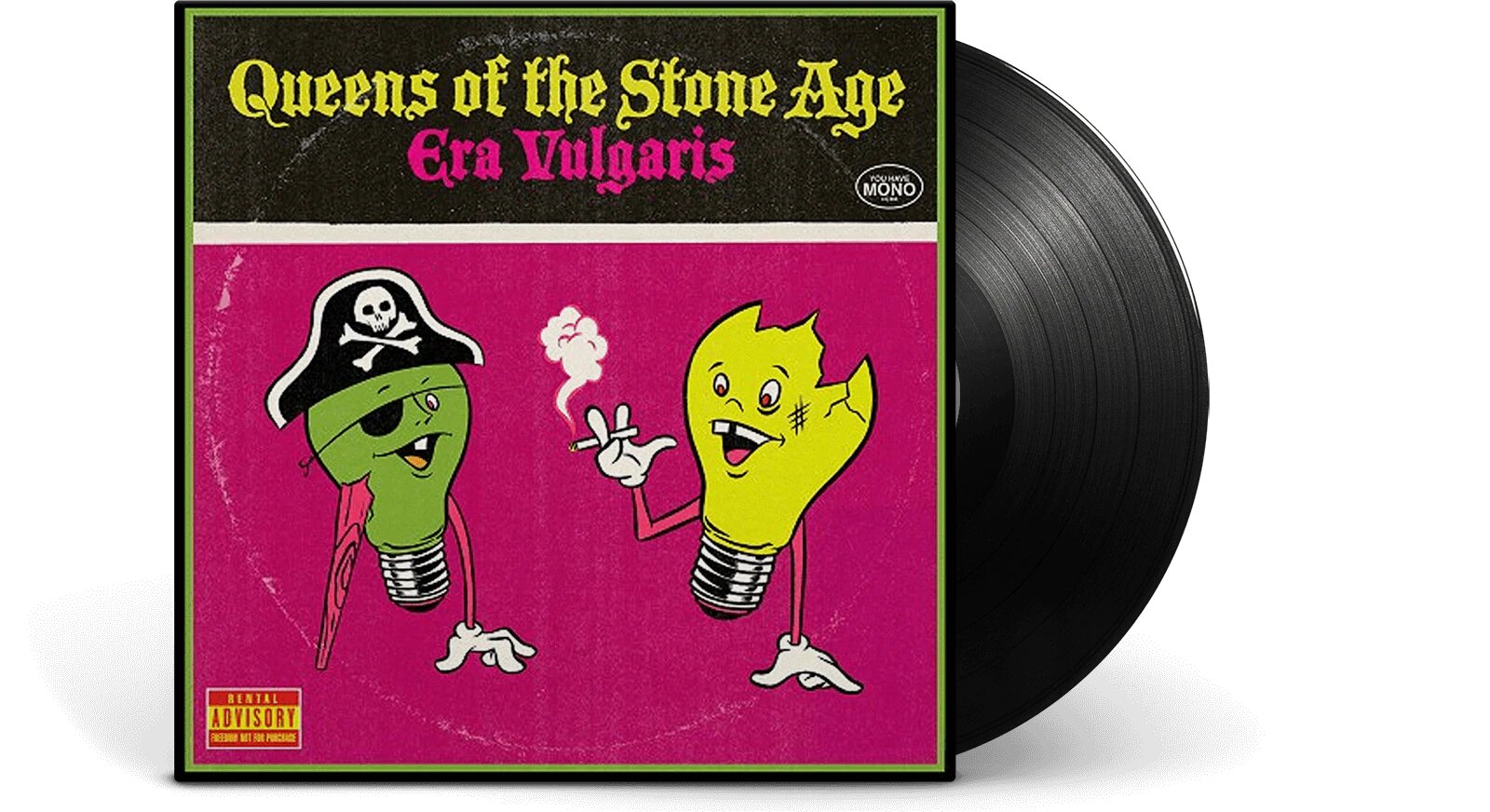
Queens of the Stone Age – “Era Vulgaris” | Photo: The Record Hub
CLAIRE MALLETT
Claire Mallett is the West Coast Brand Manager of Dirty Sue Premium Olive Juice and Ombassador for OM Chocolate Liqueur. Consultant at Catch One Nightclub and Three Clubs Cocktail Lounge. Art Curator for Art Beyond the Glass and recent inductee to the Board of USBG SoCal. A gal on the Hollywood scene since the mid ‘90s. Music is in her soul.
Queens of the Stone Age – Era Vulgaris [Interscope Records, 2007]
“There are some albums that take you instantly to a moment in time. Era Vulgaris is one of those records for me. Many a late night in the bars of Hollywood, with great friends and good times. Their previous album Songs for the Deaf is said to be inspired by drives through the Californian Desert. Era Vulgaris was born from driving the streets of Hollywood. It has the grit and the darkness to match that vision perfectly. Released in a time of decadence and vulgarity, prior to the economic crash of 2008. This is one of those albums where my favorite songs and two of its hits – “3’s & 7’s” and “Make it wit Chu” – are actually on the B-side.”
A-Side: Naked and Famous
“Famous for the sake of being famous. Josh Homme describes “I’m Designer” as “A declaration of co-dependence…. Is Gluttony bad or Gluttony rad! Elitism is terrible if I’m not included. Money is the root of all evil, but I need money to make rent.” At a time when the Kardashians were rapidly rising to fame and excess was all the rage. The perfect cocktail that comes to mind is the Naked and Famous. Made with Mezcal De La Luna, which is owned by Homme’s former bandmate and Desert Sessions artist Dave Catching. Smokey, sweet and a little bitter. As a riff on the Paper Plane (which also originated in 2007) it matches “I’m Designer” perfectly.”
Naked and Famous
by Joaquín Simó, Death & Co NYC (2011)
- ¾ oz Rancho De La Luna
- ¾ oz Yellow Chartreuse
- ¾ oz Aperol
- ¾ oz Lime Juice
- Shake all the ingredients with ice, then strain into a coupe. No garnish.
B-Side: Chihuahua
“To say I love “Make it wit Chu” would be an understatement. Written by fellow Desert Sessions musician Alaine Johannes, this has to be the sexiest rock n roll song of all times. As Homme’s softer side croons “I wanna make it wit chu, anytime, anywhere” Era Vulgaris went straight onto the jukebox at The Three Clubs in Hollywood the moment it was released. A frequent regular at that time, I would play “Make it wit Chu” at least once nightly. After a couple of years I walked into the bar and it had been replaced by another QOTSA album. I looked quizzically at the bartender, Jennifer, and she said, “Claire, I couldn’t take it anymore.” Sorry about that Jennifer. When they filmed the music video in Joshua Tree, it was directed by our friend Rio Hackford and starred all our friends making out feverishly. Filming Day fell on my birthday and nabbed a large portion of my party’s guest list – I couldn’t even be mad about it. The video is smoking hot, as is the song.
Rio Hackford passed away a week ago. I dedicate this cocktail match to him. Back in the day, pre-cocktail renaissance, we all drank spirit-soda-splash of something. For Rio it was Tequila, Soda, Splash of Grapefruit and he called it the Chihuahua. It’s still available on the cocktail menu at his New Orleans bar, One Eyed Jacks.”
The Chihuahua
drank by many, named by Rio Hackford at some point in the early 2000s
- 2 oz Tequila
- 4 oz Soda Water
- 1 oz Grapefruit Soda
Nonprofit: Art Beyond the Glass
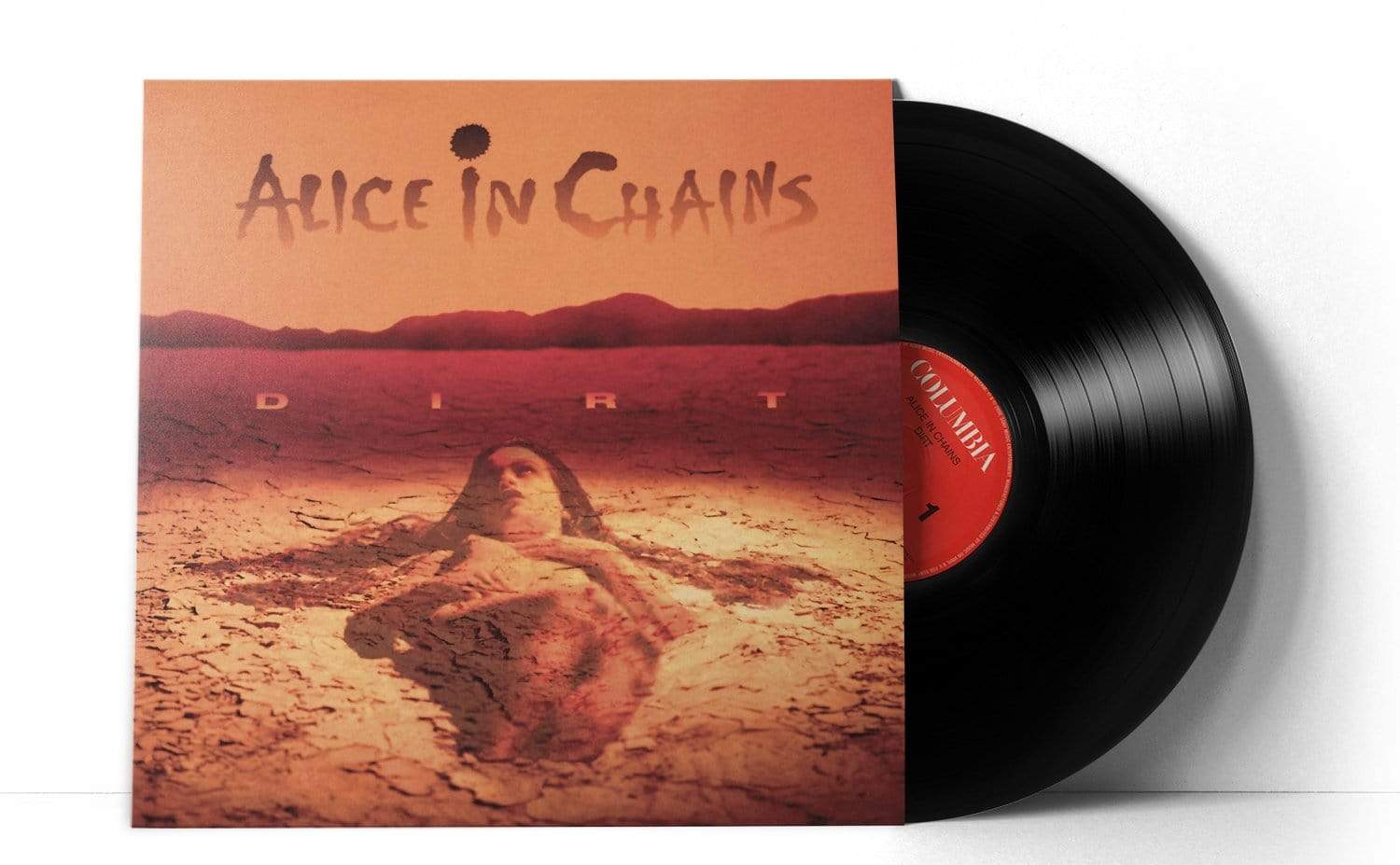
Alice in Chains – “Dirt” | Photo: Joco Records
COLIN BAUGH
Colin Baugh is the Founder and President of Emblem Public Relations (@emblem_pr). Colin brings more than 15 years of experience as a public relations professional specializing in the beverage industry. Emblem PR’s client roster boasts globally recognized brands, from the world’s first single-estate tequila, to a pioneer in American-style gin, to a bartender-created range of twice-filtered premium olive juice and cocktail garnishes. We know how to secure top-tier coverage for our clients when there’s news to report and, sometimes more crucially, in the times between the big announcements.
Alice in Chains – Dirt [Columbia Records, 1992]
“The early to mid-90s were to kids growing up in and around Seattle what the early 60s were to youth in Greenwich Village or the late-60s were to Bay Area flower children. For those of us coming up in the Great Wet North, the tone of the Grunge era matched the town: dark, angsty, and unsure of what to do with all that anger. The Northwest and the rest of the US were emerging from a recession; before the boom times of obscene wealth ushered in by the Amazons of the world. Microsoft was still coming of age. Seattle was still, in its heart, a fishing and aviation town.
I was in 10th grade, still never having attended a proper rock concert, when I found myself on the receiving end of an offer from Tim Crawford of an extra ticket to see Alice in Chains, on the Dirt tour, live at the Mercer Arena. It was a homecoming show, the last weekend of the tour, either December 19 or 20 – I can’t remember which. What I do remember is that the weather was characteristically awful, that the show’s supporting acts were Screaming Trees (RIP Mark Lanegan) and Gruntruck, and that it had a profound effect on me. It was my first show. It was the first time I smelled weed. It felt like the first time I was wholly divorced from any parental influence. It was freedom, man. The next day I begged my parents for Dirt on CD as a Christmas present.
So, on this, the 30th anniversary of the release of that record and the 20th anniversary of front man Layne Staley’s passing, my A and B-sides.”
A-Side: Old Soul
“It’s a funny thing, my connection to the Dirt album. It’s everything I’m not. It’s moody and brooding, 13 tracks spanning just under an hour, diving headlong into themes of drug addiction and loss that I couldn’t relate to any more than a squirrel can relate to an alligator. Lead guitarist and principal songwriter Jerry Cantrell penned lyrics to songs like “Sickman,” “Junkhead,” and “Would?” that read like a day in the life of Layne Staley, practically forcing the singer to confront his illness publicly by articulating those lyrics. I remember one of my high school classmates was Staley’s snowboard instructor. He said the poor bastard could barely make it down the hill more than a couple times before going back to the lodge to fix.
I loved “Would?” the first time I heard it as part of the Singles soundtrack. But for a wide-eyed, suburban, relative innocent, that familiarity made a song that contains lyrics like “Know me broken by my master” and “Drifting body, its sole desertion” envelope like a warm blanket. Maybe it felt a little less dangerous. It’s track one on the movie soundtrack. AIC put it at the end of their album, a far more poetic landing spot for a song written in memory of another Jerry Cantrell friend who would succumb to addiction, Mother Love Bone’s Andrew Wood, and performed by a guy whose addiction would swallow him whole just a decade after that December show in Seattle.
After all that, Cantrell said in 2013, “That darkness was always part of the band, but it wasn’t all about that. There was always an optimism, even in the darkest shit we wrote.”
Rob Roy has always been my favorite bar in Seattle – reminds me a lot of Three Clubs here in LA – and Anu Apte is one of my very favorite people in an industry full of favorite people. Featured in the Fan Favorites section of Rob Roy’s cocktail menu, the Old Soul was created by a local music producer named Derek Moree, who worked at Rob Roy for six years until he retired from bartending to focus on opening up his new studio.
The drink has a piney note from the genepy that reminds me of the crisp Northwest air – the amaro dark and mellow, befitting a long Seattle winter when even the sun is no match for the thick blanket of low-hanging clouds. But there’s also a warmth and familiarity that comes through in the flavor of the bourbon that reminds you that everything’s going to be alright.”
Old Soul
by Derek Moree – formerly of Rob Roy, Seattle
- 2 oz Bourbon
- 1 oz Jelinek Fernet
- ½ oz Genepy des Alpes
- 1 dropper Bittermens Burlesque Bitters
- Garnish with lemon twist
Pour all liquid ingredients into a mixing glass, fill with ice, stir quickly for about 10 seconds. Strain into a chilled double old fashioned glass that has 2 large ice cubes. Use your peeler of choice to get a wide lemon strip. Express oils over the glass and press the rind side along the edge before placing the peel in the glass.
B-Side: FEW All Secrets Known Bourbon (neat)
“With bad decisions and loss come lessons. Maybe even a little hope. I’ve admired Jerry Cantrell for as long as I’ve been aware of him – a cool uncle who plays guitar and has probably done all the same stupid shit other rock stars do when they’re on the road. Probably more. But also a guy who’s overcome and continued to build a legacy for an iconic band, even through personal and professional tumult.
A couple years ago the team at FEW Spirits asked me if I’d be interested in helping launch a limited release that would be a collaboration with a legendary rock band. Knowing absolutely nothing beyond that, I said I would be very interested. About a week later, on a call with FEW founder Paul Hletko, I found out the collaboration would be with Alice In Chains. I thought my head was going to explode. That first show at the Mercer Arena was my Grateful Dead at the Fillmore; my Dylan at The Bitter End. The resulting product was to be called All Secrets Known, a bourbon aged in tequila barrels, and a reference to track one on AIC’s 2009 release Black Gives Way to Blue, the first album featuring new vocalist William DuVall.
Jerry’s been sober for years, but as a fan, I hope we’ve made him proud.”
Nonprofit: USBG National Charity Foundation
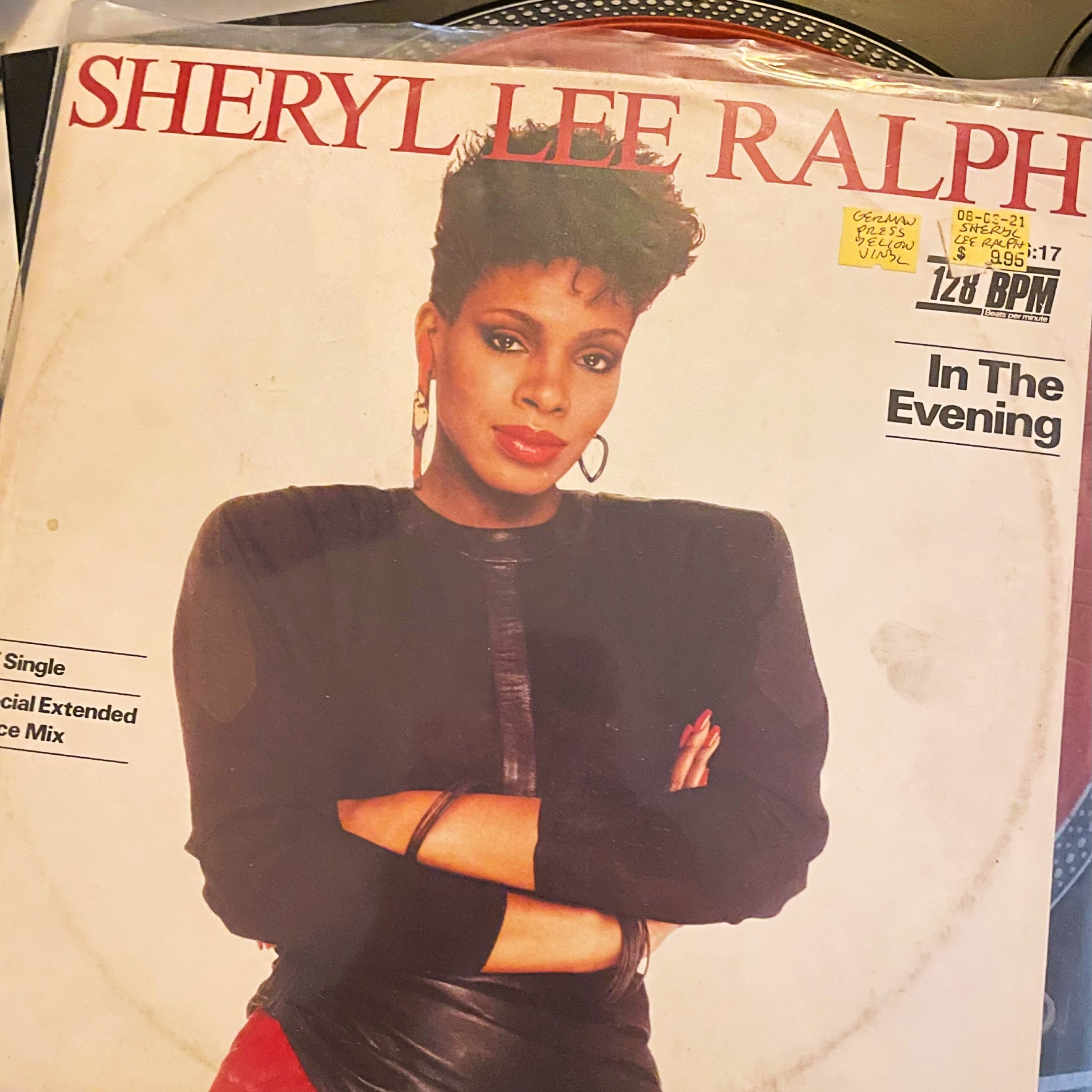
Sheryl Lee Ralph – “In The Evening” | Photo: Colin Miller
COLIN MILLER
Colin Miller is the LA District Manager for Campari America and DJs around town at spots like Club Tee Gee, where he throws the monthly party Everybody Everybody with NYC’s finest DJ Marlos (third Fridays) and The Short Stop for his party Bodytalk with techno queen Kittamami (second Thursdays). When he’s not selling booze you can often find him at LA’s best record store Paradise City in East Hollywood looking for 90s House 12-inches or scouring the hinterlands of SoCal for dance music gems.
Sheryl Lee Ralph – In The Evening [The New York Music Company, 1984]
“The year is 1984 – dead eyed monster Ronald Reagan has just swept Walter Mondale and the post 1960s liberal revolution aside in a crushing victory. Throughout the country, deindustrialization and neoliberal free market economic policies are reshaping places like the Rust Belt and punishing cities like New York. Amidst the chaos and crime however, music and art were thriving and evolving. Dance clubs in New York like Area and Paradise Garage packed in thousands of dancers every weekend to groove to the newest sounds from the Post Disco era.
Into that era steps Sheryl Lee Ralph, a child of Jamaican immigrants from Connecticut who was a rising stage and musical actress and singer. Ralph stormed into the world of Broadway, starring in the hit musical Dreamgirls in 1981. In 1984, after the success of that production she released an album of dance and pop songs called In The Evening. The title track went on to chart at Number 6 on the Billboard Dance charts and was a minor club hit at the time. Ralph would not release another album over her career, but she did go on to a successful acting and stage career starring in many TV shows (Currently she stars in the very funny Abbott Elementary on ABC).
Like many underground dance hits from that era, “In The Evening” was kept alive on dancefloors by DJs across the world who loved its soaring keyboards and driving staccato guitar samples coupled with Ralph’s superb vocals. The chorus of the song, with its empathetic lines of “In the evening the real me comes alive” lends itself to building up a dancefloor (Bonus points for that dancefloor being in New York as the song has some great vocal breakdowns where Ralph sings “New York – life in the city can be so hard but after dark new energy finds me”).
My wife and I were at A Club Called Rhonda (LA’s greatest nightlife event) this past Thanksgiving Eve when the legendary DJ Harvey played “In The Evening” during peak time, using the extended 12” mix to build up the crowd at Catch One into a frenzy before dropping in the chorus to great effect.
I probably play “In The Evening” at 90% of the gigs I do these days, and in a true testament to the longevity and appeal of the song, it rarely fails to get people dancing. You can pick up a decent copy off Discogs for around $7-10 which is well worth it for what I think is one of the great dance songs to come out of the ’80s.”
A-Side: Kingston Negroni
“In a nod to Sheryl Lee Ralph’s Jamaican heritage, this Negroni riff is a great way to start (or end) a night.”
Kingston Negroni
- 1 PART Appleton 8 Year Reserve Jamaican Rum
- 1 PART Cinzano 1757 Sweet Vermouth
- 1 PART Campari
- Stir and serve on the rocks with an orange twist.
B-Side: Jungle Bird
“Keeping with the Jamaican theme, this bitter + sweet drink will keep you going on the dancefloor late “In The Evening.”
Jungle Bird
- 1½ oz Appleton 12 Year Rare Casks Jamaican Rum
- ¾ oz Campari
- 1½ oz Pineapple Juice
- ½ oz Lime Juice
- ½ oz Simple Syrup
- Shake and strain over ice in a tall glass. Garnish with pineapple leaves, lime wheel and a cherry.
Nonprofit: No Us Without You
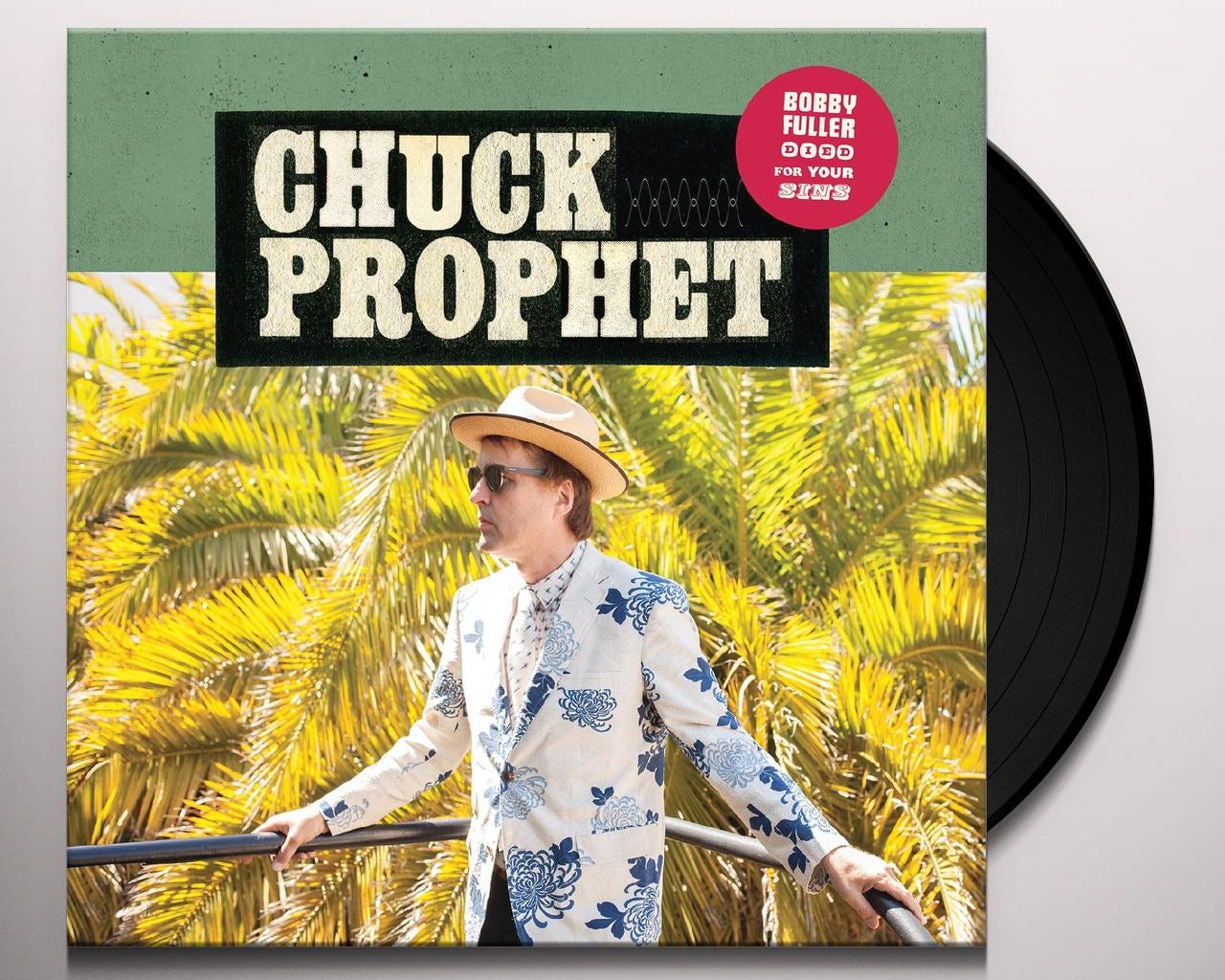
Chuck Prophet – “Bobby Fuller Died for Your Sins” | Photo: Merchbar
DAVE STOLTE
Design director and award-winning illustrator Dave Stolte heads the studio Wexler of California, providing creative services to the restaurant, bar, and liquor industries. Clients have included Disney, Pernod Ricard, Campari America, Marnier Lapostolle, Rémy Cointreau, Smuggler’s Cove, The Bon Vivants, Lush Life Productions, Haas Brothers, Las Joyas del Agave, Dirty Sue, and Consortium Holdings (San Diego).He is the author, illustrator, and publisher of “Home Bar Basics (and Not-So-Basics),” twice nominated for a Tales of the Cocktail® Spirited Award as “Best New Cocktail Book,” now available in an all-new third edition co-authored with Jason Schiffer.
Chuck Prophet – Bobby Fuller Died for Your Sins [Yep Roc, 2017]
“Chuck Prophet is a preservationist at heart: celebrating and disseminating noteworthy music from his vast vinyl collection on his weekly “Trip in the Country” radio show via the streaming service Gimme Country, performing the entirety of the Rolling Stones’ Some Girls in concert with Charlie Sexton, and covering obscure tunes like “If I Was a Baby” by Ezra Furman & The Harpoons or “Shoot ‘Em All Down” by Howard Tate. But it’s his witty originals, energized and informed by his deep love of the music of others, that really shine. Check out a solo acoustic performance of “Wish Me Luck” to get the picture.
Born in Whittier (“Nixonland”), Chuck now calls San Francisco home. He played with LA-based paisley underground / alt-country Green on Red in the late ‘80s – early ‘90s, then struck out on his own, releasing sixteen albums to date. His 2017 Bobby Fuller Died for Your Sins is my pick for this year’s Booze & Vinyl. It’s a ripping slice of rock & roll, kicking off with the title track homage to ‘60s rock legend Bobby “Let Her Dance” / “I Fought the Law” Fuller, who was found dead of never-solved causes in his car at age 23. Tunes on the album recall a wide variety of influences, from X to Bob Dylan. Name-checks range from punk pioneer Alan Vega to actor/singer Connie Britton to police-violence victim Alex Nieto. “Bad Year for Rock n Roll” mourns David Bowie but – in spite of its chugging catharsis – admits, “I wanna go out, but I’ll probably stay home.” The whole album, front to back, is straight-up fun.
Chuck is currently taking a break from touring while he battles recently-diagnosed lymphoma (blood cancer). He says the prognosis is good, and to expect “one helluva make-up tour.” In the meantime, please consider a donation to the Lymphoma Research Foundation, subscribe to Chuck’s amusing Substack, and wish him luck.”
Bonus Apple Music playlist, curated by Dave: Chuck Prophet’s Record Shelf
A-Side: Lapu Lapu
“Let’s get sloppy poppy with something frivolous, vibrant, and loud: the Lapu Lapu from Laguna Beach’s Royal Hawaiian, briefly resurrected from shitville by Jason Schiffer during an ill-fated beverage program overhaul.”
Lapu Lapu
Royal Hawaiian, Laguna Beach (1960s) | Jason Schiffer, Tradecraft Hospitality (2010s)
Shake with pebble ice:
- ¼ oz rich demerara syrup
- ½ oz passion fruit syrup (1:1 Goya frozen passion fruit & white sugar, melted together over very low heat)
- 1 oz orange juice
- 1 oz lemon juice
- ¾ oz Plantation OFTD rum
- ¾ oz aged rhum agricole (I like Clément)
Dump into a snifter & top with additional pebble ice, then float:
- ¾ oz 151 Demerara rum (Hamilton or Lemon Hart)
- Garnish with an orange & cherry flag + mint sprig.
B-Side: Pisco Punch
“Not that you’d necessarily need another drink after that blowout, but in case you do… why not enjoy a Pisco Punch, the San Francisco treat created by Duncan Nicol at the Bank Exchange Bar in the 1890s? Things could be worse.”
Pisco Punch
by Duncan Nicol, Bank Exchange SF (1890s)
Shake with ice cubes:
- ¾ oz pineapple gum syrup (Small Hand Foods)
- ¾ oz lemon juice
- ½ oz Rioja wine
- 2 oz pisco
Strain into a chilled coupe, garnish with a lemon twist.
Nonprofit: Lymphoma Research Foundation

Tribo Massáhi – “Estrelando Embaixador” | Photo: Geoffrey Wilson
GEOFFREY WILSON
Geoffrey Wilson bartends at Latitude 29, works for Turning Tables NOLA, and spends his rent/food $$ on vinyl.
Tribo Massáhi – Estrelando Embaixador [Goma Gringo Discos, 2015]
“The funny thing about booze and vinyl is that one day I’m going to have to give up one voluntarily. Booze. Trust me, I know that I can’t take the vinyl with me after I’m gone and I’m good with that. It is what it is, but while I’m still here my record collection keeps getting bigger while I slow down on the booze intake. It’s what happens when you get old. Fuck it.
I was living in Arizona managing a restaurant bar. I didn’t have free time and when I did, I was at the record store because it was on my way home from work. There was a particular record store (that doesn’t exist anymore) in Old Scottsdale where the main buyer and I bonded over ’90s East Coast Hip-Hop, Factory Records, Impulse! and the artists on Frank Zappa’s Bizarre and Straight Labels. One day he asked me if I knew of an album by Tribo Massáhi called Estrelando Embaixador. Of course I’d heard of it. It’s a small press Brazilian Afro-futurist Psychedelic record from the early ’70s that costs a couple grand (I just looked on Discogs right now and a copy is for sale for exactly $10,638.30 plus shipping), and if he found a copy I would not be able to afford it. Lucky for me that wasn’t the case. There was a small label out of Brazil that was doing the official reissue that would cost far less that the original or any unofficial bootleg that was out there. Also, the information on this reissue was hard to track down because of the limited pressings, pseudonyms of the artists and the dialect that was used at the time. When I got the record I played it on my portable turntable and it pretty much didn’t leave it for a month.
Both sides have four songs that run consecutively, as it was recorded live in a studio in 1970. The story is that the Embaixador assembled a team of musicians to make an album in an afternoon. There were no arrangements, just charts which the group improvised over. There’s Jazz, Funk, Samba and Psych Rock with African Percussion/Rhythms, but the record flows freely with its spontaneous arrangements and choruses. To me, this record has obvious tropical vibes because it was recorded in Brazil in the early ’70s, and that’s why the drinks are in a tropical vibe.”
Timolô Timodê (A-Side): Bananavardier
“So, Imma come out and say that I invented the Bananavardier. I came back to Tales in 2015 to work, and that was the year that Beachbum Berry won an award for his book Potions of the Caribbean and Three Dots and a Dash won for best bar program, so I went back to Arizona wanting to put tropical fruits in every classic cocktail. I made a Boulevardier with some shitty banana liqueur and put it on an old cocktail recipe site called Bar Notes.
Side A starts with heavily reverbed crowd noises and a funky instrumental jam called “Walk By Jungle.” The same tempo continues into a song called “Fareuá” which is a call and response between The Embaixador and the chorus. The tempo immediately picks up for “Harmatan” and “Dandara,” which goes along with what the Bananavardier does. The immediate reaction is “Oh shit, is this going to work?” to “Oh shit! This works!”
Bananavardier
by Geoffrey Wilson – Bar Notes 2015, updated 2022
- 1½ oz Old Grand Dad 114
- ¾ oz Giffard Banane du Brésil
- ¾ oz Campari
- ½ oz Mulassano Rosso Vermouth
- Orange peel
- Combine all ingredients in an Old Fashioned glass, add ice and stir.
Lido’s Square (B-Side): Ankle Breaker
“Side B starts out with a song called “Pae Joao” – the bassline sounds awfully familiar to the “Peter Gunn” theme. It also sounds like the group is assembling for a party in Lido’s Square, which immediately downshifts into “Menina De Janela” (my favorite song on this record). The “Peter Gunn” bassline is back to link the last two tracks: “Oan” and “Madrugada Sem Luar,” which are in the same call-and-response modes – more uptempo, more funky, and at the end, “Madrugada” breaks out into a full-fledged party.
This is why I chose the Ankle Breaker. It’s a deceptively simple cocktail that masks the fact that there’s 151 in the cocktail because there’s a familiarity of something that you know (the “Peter Gunn” bass line), the sweetness of the Cherry Heering, the acidity of the lemon juice, and a tiny bit of simple syrup to balance out everything, and it all ends up as a party!”
Ankle Breaker
adapted from “Beachbum Berry Remixed: A Gallery of Tiki Drinks”
- 1 oz Hamilton 151
- 1 oz Cherry Heering
- 1 oz lemon juice
- ½ oz 1:1 simple syrup or ¼ oz. 2:1 rich simple syrup
- Whip shake with crushed ice and dump in an Old Fashioned glass.
Nonprofit: “Turning Tables advocates for equity in the hospitality industry by providing mentorship, educational tools and exposure in a system of support for the Black and Brown Communities of New Orleans. Turning Tables is changing the face of hospitality by cultivating leadership and creating a model for equitable access to career pathways.
We seek out partnerships with employers, brands, and like-minded individuals in the industry that recognize the pervasive inequity within the industry and want to join us in challenging it. We support them to identify the ways in which racism, discrimination, and implicit bias have permeated their establishments, and help them implement new practices and policies to eliminate it.”
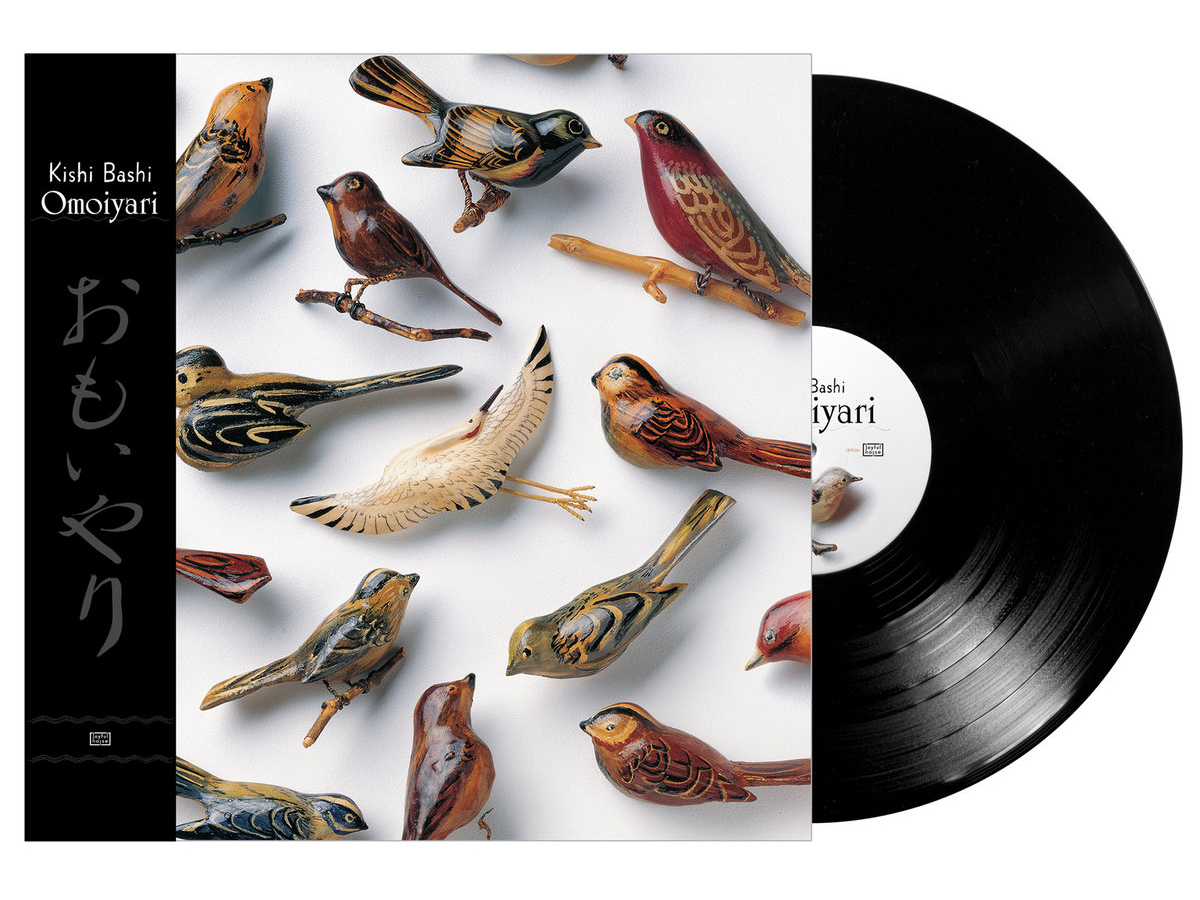
Kishi Bashi – “Omoiyari” | Photo: Bandcamp
KELI RIVERS
It would be humble to say that Keli Rivers has been very lucky in her career – first employee hired at San Francisco’s Whitechapel as their ginnoisseur, featuring the largest gin selection in the Americas – to her current role as Brand Ambassador of the juggernaut Sipsmith living in Brooklyn – but honestly she has worked her butt off to get to where she is. Her love of music started off at an early age from her prized “Sesame Street Fever” disco album, to long conversations with her father about beer, blues and BBQ and even a five-year sentence as music director for UC Berkeley’s radio station KALX, where she learned of her immense dislike of her own voice as DJ Jellybean! Currently she spends her time spreading the gospel of juniper driven beverages with a perfectly crafted Negroni in hand. One might call Keli’s fascination with the marriage of the botanically guided and music an unhealthy fixation – however in the words of the infamous icon John Waters, “Without obsession, life is nothing.”
Kishi Bashi – Omoiyari [Joyful Noise Recordings, 2019]
“There is something so very wonderful about the first warm breath of spring, a perfectly crafted cocktail, unwrapping a new piece of vinyl – this trifecta brings me back to simpler times, when promises of ice cream cones could cure any heartache or scraped knee. Audible, olfactory and taste memories have always been strong in my life. The first few notes of the classic Don McLean opus take me back to being 10 years old – moving the needle back and forth for hours as I transcribe the lyrics to “American Pie” only to find them printed on the dust jacket when finished. Whenever I catch a whiff of blooming night jasmine, I am instantly taken back to the growing butterflies in my stomach, bag full of 45s as I walk into a San Francisco Mission bar to DJ my first soul night. Nothing brings these three memory-inducing elements together like cocktails and music, so without further ado here is my 2022 vinyl and beverage pairing.”
A-Side: The Line
“I play this game with friends where we share a memory that would be featured in the movie of our life and the song that would be its soundtrack. Multi-instrumentalist Kaoru Ishibashi (who performs as Kishi Bashi) released his fourth album, Omoiyari in 2019. The third track, “Marigolds,” would 100% play over a montage of secret childhood memories – like when I “found” myself lost walking into the pastry kitchen of a Michelin-starred restaurant in the French countryside when I was 7. The violin pizzicato in the first 30 seconds captures the wonder I experienced while silently watching the choreographed dance of those white jackets. It was at this moment I knew if I couldn’t be a race car driver, then I wanted to be a chef. But don’t let the upbeat orchestration fool you, this track is full of “what-ifs” and “what-could-have-beens” – everything my sentimental heart loves: “Wish that I had met you when your heart was safe to hold, when you were simple and fancy in that field of marigolds.”
Ishibashi is currently based in Athens, Georgia where his fellow ex-bandmates from of Montreal reside, sharing his love of lush soundscapes in every track. For fans, this might come across more fully than previous albums – for the first time, Kaoru utilizes both live string players as well as loops and other post-edit effects.
In composing Omoiyari (Japanese for the concept that thinking of others fosters compassion) Ishibashi dug into the darker part of American history. He recorded not an album but a documentary film, Omoiyari: A Song Film by Kishi Bashi that debuted in March of this year, linking the Muslim ban and the immigration crisis at the US-Mexico border with the incarceration of Japanese Americans during WWII.
The Line Cocktail was created in 1924 by Yonekichi Maeda, a bartender at the Cafe Line and author of Japan’s first modern cocktail book entitled Kokuteeru, named after an old slang word for a pick-me-up.”
The Line
by Yonekichi Maeda, Cafe Line (1924)
- 1 oz Sipsmith London Dry Gin
- 1 oz Benedictine
- 1 oz sweet vermouth
- Shake together and strain into a chilled cocktail glass.
B-Side: Sakurazuké Martini
“Starts with “Summer of ’42,” an epic, cinematic and optimistic aria that wraps around you like a weighted blanket – “Were all the things you wanted, The same as anyone? Just to have and hold a living, after all is said and done. And the days were long and open, ’cause I had a view of you- the summer of ’42. When I was in love with you.”
But for me it’s the penultimate track, “Violin Tsunami,” that makes me wonder if Suzuki’s Method that “Musical ability is not an inborn talent but an ability which can be developed. Any child who is properly trained can develop musical ability…” isn’t the largest pile of BS I have ever stepped in because 10+ years of violin lessons never brought out the thundering notes that seems to leak from every pore of Ishibashi’s being. The first three minutes of this song feel like a full speed sprint to the top of a mountain to witness a sunrise of a brighter future. Then we hear in a whisper of a promise – “When in song we are blessed to be, Mending the rift of our apathy” and we believe hope once again.”
Sakurazuké Martini
recipe by Julia Momosé from “The Way of the Cocktail” (2021)
- 1½ oz Amabuki Gin no Kurenai junmai sake
- ½ oz Mancino Sakura vermouth
- ¾ oz Campari
- 1 barspoon Shiozakura saline solution*
*Shiozakura saline solution
- Place a bowl on a digital scale and measure 10 salted Sakura blossoms
- Add 2x their weight in warm water and stir until the salt dissolves
- Strain out the flowers from the liquid
- Store the saline solution in a sealed container
- Store the flowers in fresh water in the refrigerator
“Stir all the ingredients together. Place the sakura blossom from making the saline solution in the bottom of a chilled cocktail glass. Carefully strain the cocktail on top and express a lemon peel over the top and discard.
This cocktail is only one of the beautiful and inspired drinks from Julia Momosé’s cocktail book The Way of the Cocktail. Momosé is the mastermind behind the world-famous bar program at Chicago’s two-Michelin star Japanese restaurant, Kumiko. While these ingredients might be slightly harder to source, the cocktail will be a reward unto itself.”
Nonprofit: “New York based Harmony Program is bringing intensive after-school music programs to underserved communities with limited access to instrumental music education. Founded in 2003 as a pilot program with the mayor’s office to address the lack of arts education in primary schools, by 2008 Harmony established an institutional partnership with the City University of New York and was re-launched in its current model with an emphasis on intensive instruction, ensemble performance, and teacher training. For the cost of a night out on the town (without cocktails), your $250 donation could provide supplies for an entire orchestral percussion section!”
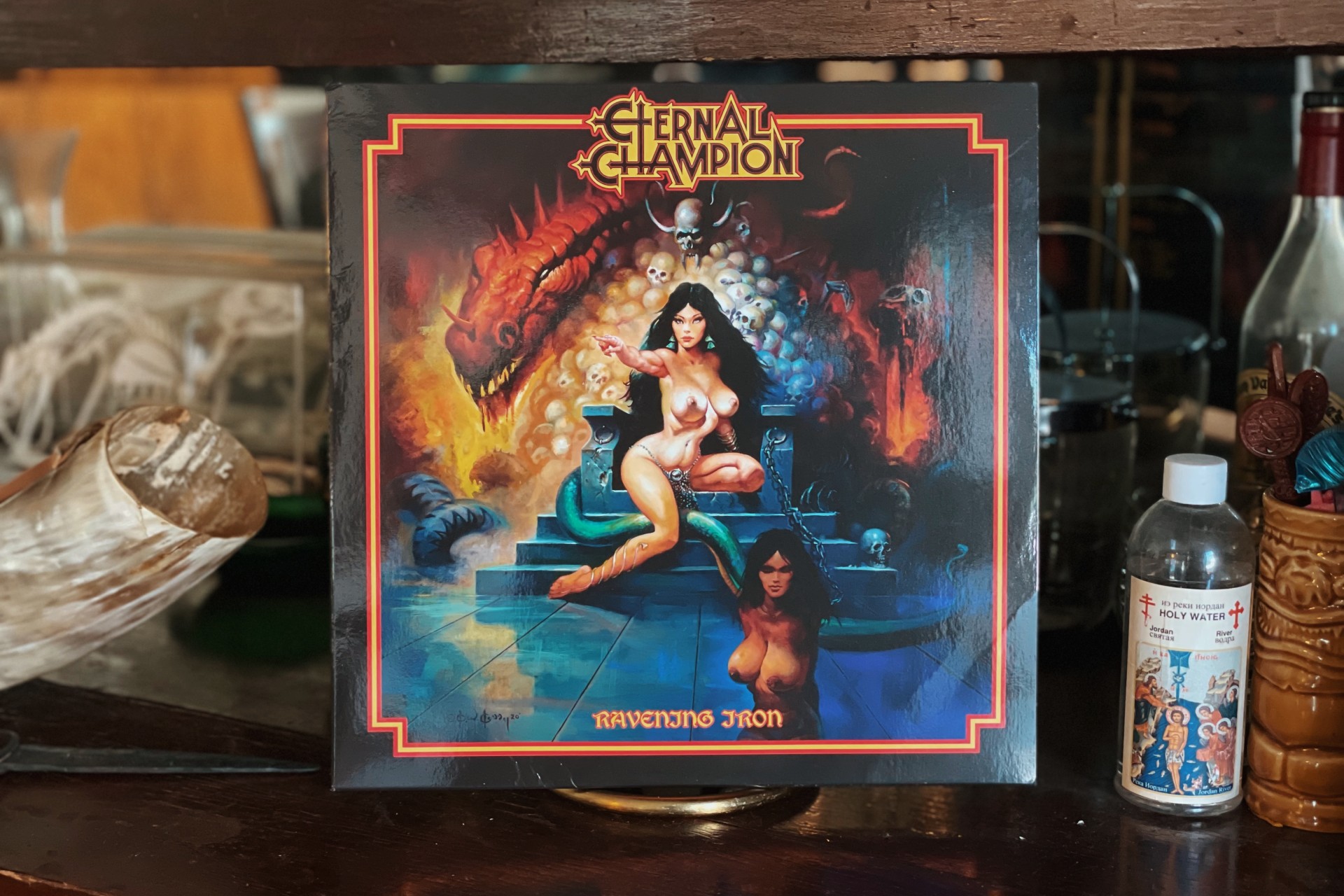
Eternal Champion – “Ravening Iron” | Photo: Maxwell Reis
MAXWELL REIS
Maxwell Reis is a worshiper of Agave Spirits, Cocktails, and avid jammer of Metal Music. Hailing from Napa, CA he currently resides in Los Angeles where he runs an agave specialized beverage program at Gracias Madre in West Hollywood. You can usually find him drinking Mezcal out of carefully labeled water bottles, preaching ethical agave practices at his own bar, and generally shaking things up about town.
Eternal Champion – Ravening Iron [No Remorse Records, 2020]
“A horde of carrion-fueled ghouls charge a twisted stone tower. A wizard raises his staff – releasing a blinding light – and in a mere moment, banishes all his foes to an eternal void. A battle-born warrior loses himself in his own reflection – his image looks back from the blood-stained steel of his sword – in this moment, he is a god. A weary cloaked traveler, horse heavy with spoils of their journey, finds refuge in the candlelight glow of an isolated tavern. They escaped the grasp of the swirling storm, hoping to forget the journey in a storm of ale.
I’ve always used Metal as a form of escapism. A polarized and absurd fantasy of reality – one so intense that those outside of that world often can’t understand the humor that the intensity also brings. As a young man growing up in a small town, Metal allowed me a space of absurdity all my own. As an adult, Metal always gave me back a piece of my youth, and all the dreams and optimism that came with it. Over the past two years in the pandemic, I leaned on metal not for a return to younger years, but once again an escape from reality – an absurd best friend.”
A-Side: The Blacksmith’s Hammer
“As the needle drops on Side A of Ravening Iron, the sounds of a blacksmith’s forge are summoned from within my speaker cabinets, tempering our expectations just as the blacksmith tempers his swords. Just like that, we’re immersed in battle, trying to behead the very gods that created us. The roar of the distorted guitar becomes the roar of the forge, the hammering drive of the drums become the blacksmith hammering his steel, then come vocals, providing the warriors their cries as they charge into battle.
There’s something so comforting to me about Metal that creates this almost cliché brand of space within the genre – not trying to bend the confines or expectations, but comforting us with nostalgia passed through a new lens. It reminds me of cocktails – often rooted in a place of familiarity and brought into the modern age. A contemporary take on a classic. Nothing is more metal than a “Riff.”
The Imbued Whiskey Cocktail
- 2 oz Michter’s Rye Whiskey
- ¼ oz Kirschwasser
- ¼ oz Rich Demerara Gomme
- 1 dash Peychaud’s Bitters
- 1 dash Angostura Bitters
- Aalborg Taffel Aquavit Rinse
- Garnish: Dill Sprig
- Rinse an Old Fashioned glass with the Aquavit. Stir and strain onto a big rock. Garnish with the dill sprig.
B-Side: Boiler Unmaker
“The midpoint of Revenging Iron, Track 5 – “Cowards Keep” begins in the liner notes with a Tolkien quote: “A man that flies from his fear may find he has only taken a shortcut to meet it,” although the quote is absent from the recorded song. A man “wearing the chains of a lowly subject” has been allowed to enter the cowardly king’s keep, leaving with no chains, but instead blood dried on his blade. The royal keep is left aflame, and the legacy of the king shall be forever sung, but as the ballad of coward. The album continues to stay true to its theme through the reckoning of vengeance – the fall of Rome, and the use of “the god blade” in conjunction with demon priest magic to destroy the Christian God. An Eternal Champion, by championing the Eternal God. In celebration, glasses are raised to the blood spilled, both that of comrades and fallen foe.
Is it weird to liken the completion of a grueling task like toppling a kingdom and vanquishing its god, to completing a Saturday night service behind the bar? I hope not – because that’s where I’m going with this. Sometimes after accomplishing a great feat, you don’t desire something grand or fussy, you want something that refreshes and grounds you, reminds you’re alive and who you are. Bartenders are often found with a beer and shot it hand, something simple you can’t mess up, and something that doesn’t make ordering a grand occasion. Sometimes celebratory cheers with comrades in battle is all you want and all you need in such moments of triumph. A 50/50 amaro shot has also become a symbol of industry, especially here in LA where I currently sit writing this. It’s a simple way to imbue the spirit of a cocktail with the simplicity of shot. So, I raise these glasses to you, my comrades in battle. \m/”
Boiler Unmaker
1 Pint Einstök Arctic Lager
Served with a 50/50 shot of:
- ½ oz Dansk Mjød Viking Blod Mead
- ½ oz Pierre Vallet VSOP Cognac
Nonprofit: Tequila Interchange Project
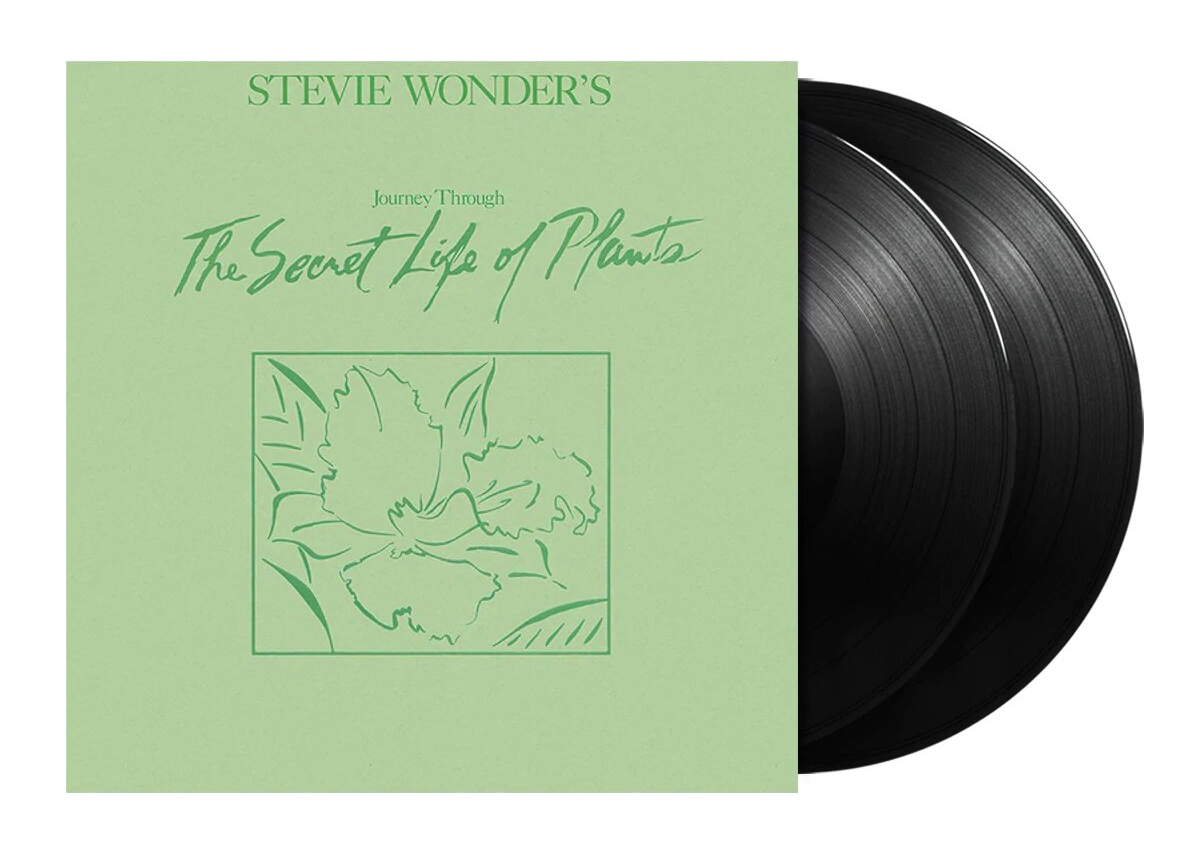
Stevie Wonder – “Journey Through ‘The Secret Life of Plants’” | Photo: Urban Legends Store
NAOMI SCHIMEK
Naomi Schimek jumped back into the local bartending arena in 2019 after spending the previous six years traversing the globe as a brand ambassador and guest bartender via her bar and beverage consultancy, Schimek Studios. She is well-known for her creative impact on the early days of the LA mixology scene, then a culmination of a storied bar career that began in the early 90s. Naomi is currently the bar director at Soulmate West Hollywood. She likes old cars, new dresses and rock n’ roll.
Stevie Wonder – Journey Through “The Secret Life of Plants” [Tamla, 1979]
“Can a blind musician create a soundtrack for a film that he cannot see? Absolutely, and to incredible effect.
After winning the Grammy for Album of the Year on three consecutive albums, Stevie Wonder then accepted the challenge of providing the soundtrack for a documentary based on the best-selling book, The Secret Life of Plants. Having built his legacy upon the traditions of soul, gospel and the Motown sound, Stevie then fearlessly sought new, esoteric musical heights: “It was an experimental project with me scoring and doing other things I like, challenging myself with all the things that entered my mind, from the Venus flytrap to Earth’s creation, to coming back as a flower.”
The film’s producer, Michael Braun would relate each visual image in great detail to Stevie, while the sound engineer would specify the length of each passage. The film itself is a psychedelic wonderland of time lapse photography. It documents the philosophy that plants are conscious beings that feel emotions such as pain and joy, communicate with the galaxies and sometimes, even predict the future.
This double album is a magical dichotomy: the wonders of the natural world related through a techno odyssey. It ultimately took six studios to complete – recorded on four tracks and containing new synthesizer combinations, including the Computer Music Melodian, showcasing the first use of a digital sampling synth on an album. (Stevie would go on to use the Melodian in all his subsequent recordings.)
The result is a fantastical, charming record in which Wonder’s lyrics run deep. As Pitchfork noted in 2019, ”In exploring the neglected, ignored, seemingly inhuman aspects that society affixes to the plant kingdom, Wonder finds resonance between his botanical subject matter and the Black experience.”
In this technical masterpiece, we can appreciate his intense passion for both the human condition and the botanical world. I find it a soothing record for these dark times, perhaps you will as well.”
“…if this life affords me
again
the chance to share with you
the new
and hidden knowledge,
through song,
I will move as swiftly
as life demands –
but never so fast
as not to give you
my very best.”
~ Stevland Morris
A-Side: A Seed’s A Star’s A Seed
What better way to honor this album than by making a cordial sour with Chartreuse and its 130 different botanicals?
A Seed’s A Star’s A Seed
- 1 oz lemon
- 1¼ oz Yellow Chartreuse
- ½ oz Green Chartreuse
- Shake of style, serve on the rocks. Garnish with 2 cherries and a stroll in the park.
B-Side: Sunshine Pop
This is the house favorite at Soulmate Weho, using all sunshine loving plants from beautiful California and Mexico.
Sunshine Pop
- ¾ oz lime
- ¾ oz sage syrup*
- 1 oz pineapple juice
- 2 oz mezcal
- Emulsify by shaking with 1 oz pellet ice.
- Empty all into a tall glass filled with pellet ice and garnish with a pineapple fan.
*For 1 Liter of sage syrup, combine 20 grams of dried sage with 600 grams of hot water to create a strong tea. When cooled, add 600 grams of sugar. Dissolve and strain out solids. To make the ultimate Sunshine Pop we use salvia mellifera (aka black sage), the most common sage in Southern California. Common culinary sage can certainly be used to great effect and will still taste lovely, but you won’t cry when it’s gone.
Nonprofit: “I’d like to draw attention to the Inner City Youth Orchestra (part of Heart of Los Angeles). The free after-school youth orchestra program is inspired by the Venezuelan El Sistema movement and provides free instruments, ensemble-based classical music instruction, and performance opportunities to underserved and at-risk youth in Los Angeles.”

